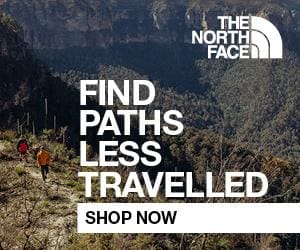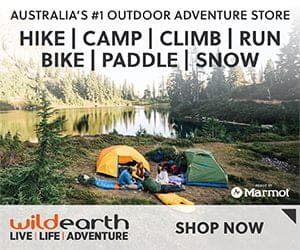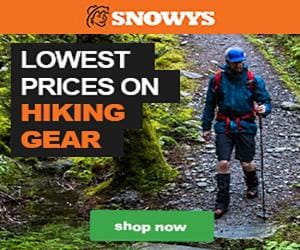Is Instagram killing the outdoors?
No doubt you have seen these headlines, or similar ones, a handful of times. A bit dramatic or is this reason for concern? My personal favourite is a promo released by Tourism NZ in 2021. This tourism campaign pokes fun at influencers in a hilarious clip: ‘Do something NEW‘.
- Think Before You Geotag Your Hikes
- Is Social Media Killing the Outdoors?
- Is ‘Doing It For the ‘Gram’ Ruining Some of the Most Sacred Outdoor Spaces?
- Are social media and selfie culture killing the outdoors?
- Calls to rethink geotagging of social media posts depicting Tasmania’s sensitive wilderness
- Warning over public safety in national parks as popularity soars
When I first started this site, I did it with the sole purpose of encouraging people to get outdoors. I wanted to show people the many great destinations around our amazing country where they could escape from the hustle and bustle of life and immerse themselves in nature. There are so many benefits to hiking, why wouldn’t I want to help people experience all it had to offer? At the time, I copped a lot of criticism from some in the bushwalking community. The general sentiment was that I was ruining the places that were otherwise unknown unless you were an avid walker as not a lot of trail based information was available online. At the time I thought they were being unreasonable, elitists, who wanted to keep these hidden wonders hidden and keep them all to themselves.
Several years on, I now have a sense as to what they were anguishing about at the time. I used to have my own special places where I could escape into the bush, knowing I would not see another soul all day. Places I could relax without all the noise and distractions of life. The more I returned to these places, the more I could see the impact unearthing these gems had on the environment I was exploring and my own sense of place. Trails that barely existed were now well trodden paths, litter was scattered along the trail that was never there before, wildlife that used to frequent the trails had gone silent and vanished. All a result of sharing these places so people could enjoy them.
Then along came Instagram, YouTube and other social channels. With that, visitations to previously unknown destinations and the impact these places simply exploded. I’m sure we all have stories similar to this; You’ve been hiking a trail for years, then suddenly you see someone post about it online. The photo looks so amazing you feel compelled to get back out there yourself to check out that view. On arrival, you can’t find any parking at the trailhead and there’s hordes of people on the trail taking selfies with their phones at the same spot all day. Noone appears to be actually taking in their surroundings, they just appear focused on that one spot. In some way, you feel your experience in nature has been ruined. Or maybe you don’t? Maybe you love seeing so many people out there and it brings a smile to your face.
Visitation rates increase across the country
Social media has undoubtedly sent visitation rates up across the country and each of us will have a different view on whether this effects our personal experience. For me, it does effect my experience so I tend to avoid places I see promoted via socials by people or tourism organisations. There’s obviously a bit to unpack here. Neither the trail nor the public land belongs to me or any other hiker. And while I make a point of not geotagging my public photos, it would be disingenuous for me to pretend that I am not partially responsible for more people showing up on the trails. The personal position I have taken is to not encourage people to visit any one particular place to capture that awesome Insta pic that will have people drooling over my socials for days.
As you can see from the handful of articles above and others regularly shared online, backlash has been brewing around this topic for years. A group of concerned hikers in the US even petitioned the Leave No Trace Foundation to add an eighth item to their seven principles, addressing the impact of social media. This group was well intended but those who heard the discussions leapt to claims of elitism and became openly and angrily defensive. At least the debate has opened much needed discussion. It is important we all understand the impact each of us has on the places we visit so we can improve our interaction with the natural world and not simply name and shame those for sharing pics on socials.
The Leave No Trace Foundation responded to the online debate that emerged, stating that “not only is shaming counter to the mission of Leave No Trace, but if the aim is to educate or to see a change in peoples’ decisions in the outdoors there is research to suggest that shaming does not work.” The Center made an addition to their social media guidelines, to include that “Shaming is Not the Answer.” It does not influence behavior, but instead creates a dichotomy of “us and them”: the people who are doing it right and those who are wrong. This can quickly become exclusionary, making those who have not yet learned Leave No Trace, don’t consider themselves an expert, or learned the concepts and principles through different language feel unable to participate in a community anchored in constant learning and providing guidelines, not rules.
Leave No Trace Social Media Guidance
Following is a quick overview of the social media guidelines mentioned above. You can read detailed recommendations on their website.
- Leave No Trace is Not Anti-Geotagging
- Consider What Your Images Portray
- Encourage and Inspire Leave No Trace in Social Media Posts
- Shaming Is Not the Answer
- Give Back to Places You Love
- Enjoy Your World. Leave No Trace!
What can each of us do?
According to a recent article discussing the impacts in Tassie; while the instagrammable aesthetics of these locations inspire more people to head out into Tasmania’s wild areas, their new-found popularity is coming at a price. The article makes reference to Wellington Park’s Disappearing Tarn, which was once only known through local knowledge, and Lake Rhona in the south-west, which became popular via social media but started having issues with toilet paper litter. God, don’t we all know this issue. I have not done a hike recently, and I hike often, where I haven’t seen toilet paper strewn all over the ground. To be quite blunt, it is an absolute disgrace and whoever does this should be ashamed.
Tasmanian bushwalker and photographer Dan Broun said the rise of social media had led to tracks getting crowded. “Numbers have increased, it’s now harder to find solitude in the national parks,” he said. He’d had to re-think his own social media footprint in the past decade. Mr Broun said the demographic of people experiencing nature had changed. He said he had noticed people leaving rubbish, “space invading“, not sticking to tracks, using drones and camping at inappropriate spots. “There’s even reports of people getting shirty with each other where there’s limited camping.” He said Lake Oberon, a difficult walk in the south-west, was getting 30 to 40 people camping near it when it could handle about 12. “The numbers are so high that in the Walls of Jerusalem, the toilets are overflowing — they can’t get the helicopters in quick enough to empty the poo pods.”
He said people’s digital footprints needed to evolve and I tend to agree.
My personal principle is to leave no trace whenever I head outdoors and this includes not leaving a digital footprint. I remove all meta data and geotags from my pics before sharing them online unless I am sharing them with a close group of friends. I’m certainly not telling you this is what you must do. I only ask that you consider the impact your amazing pics may have on others before sharing them. The main point of doing this is not to hide places from people, or keep these stunning wild places secret, or to be an elitist and keep people out. It is to protect these special places by making them a bit more obscure to the FOMO suffering photo-skimmers who are quite possibly just searching for the next great shot to leave their audience in awe. Ouch, there’s my one bite!
When you’re choosing which images to share with your world, think about what impact you may unintentionally be causing to the environment. When you’re posting a photo from your last hike or climb, try tagging a more general location or better still, none at all. This is one of the easiest ways to be more mindful of the footprints we encourage others to leave behind. I’ve decided what I’ll do to reduce my footprint on the places I love. It’s up to all of us to play our part so please consider what you’ll do.








In 2000 I visited the You Yangs for the first time. There was no one around and I saw a koala! These days you cannot find a parking spot. Every man and his dog is there. 😥
Well said. As a Tasmanian and loving getting out and about I am also dismayed my peoples filth regarding toilet paper (and 💩 not buried). And rubbish. Parsons falls is the same too. Sad but tricky.
Karen Jane Hawkins it certainly is a tricky balance.
Trail Hiking Australia agree. Saw an idiot on top of Marion’s with a drone. Unbeknown to me if we had taken a pic parks and wildlife would have fined him.
Karen Jane Hawkins yeah, I see that often too. Spend a few moments on Instagram and it seems pretty common. Hard to know if they have a permit but they aren’t often granted for recreational use so I doubt it.